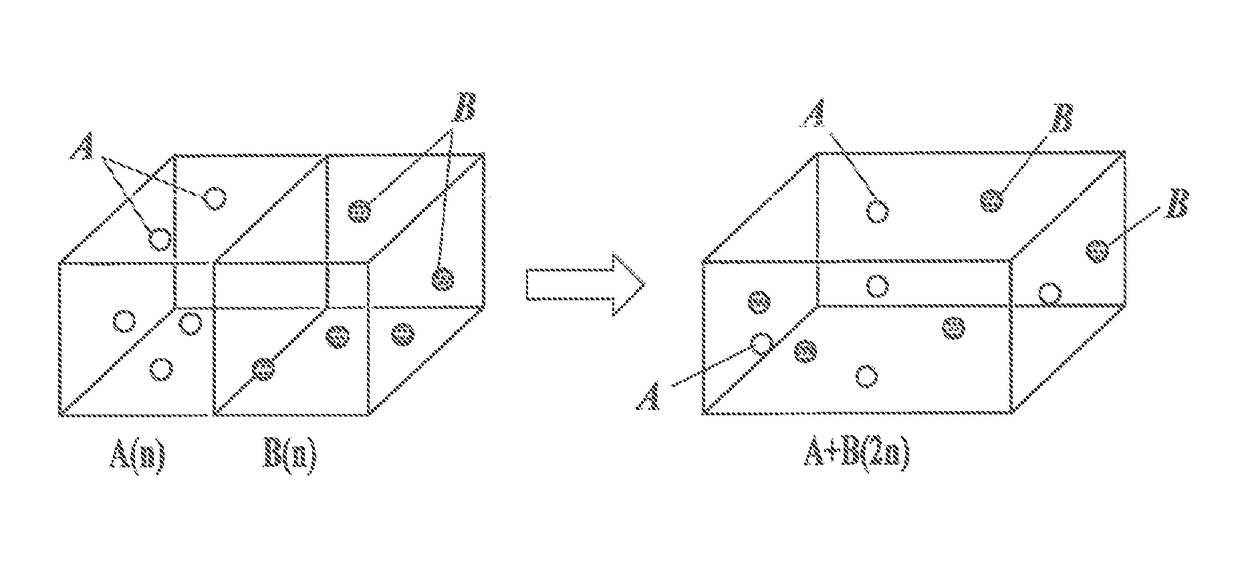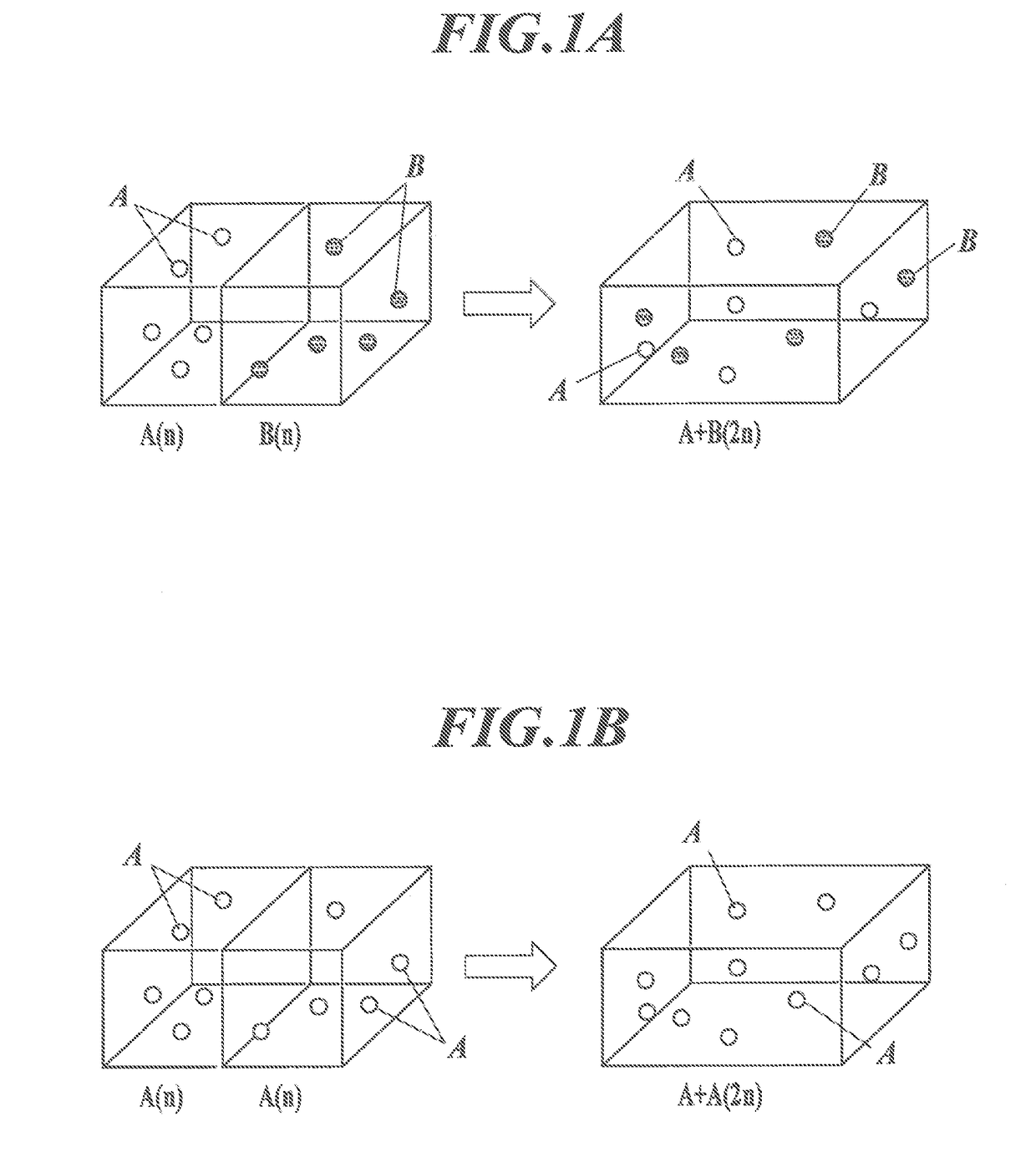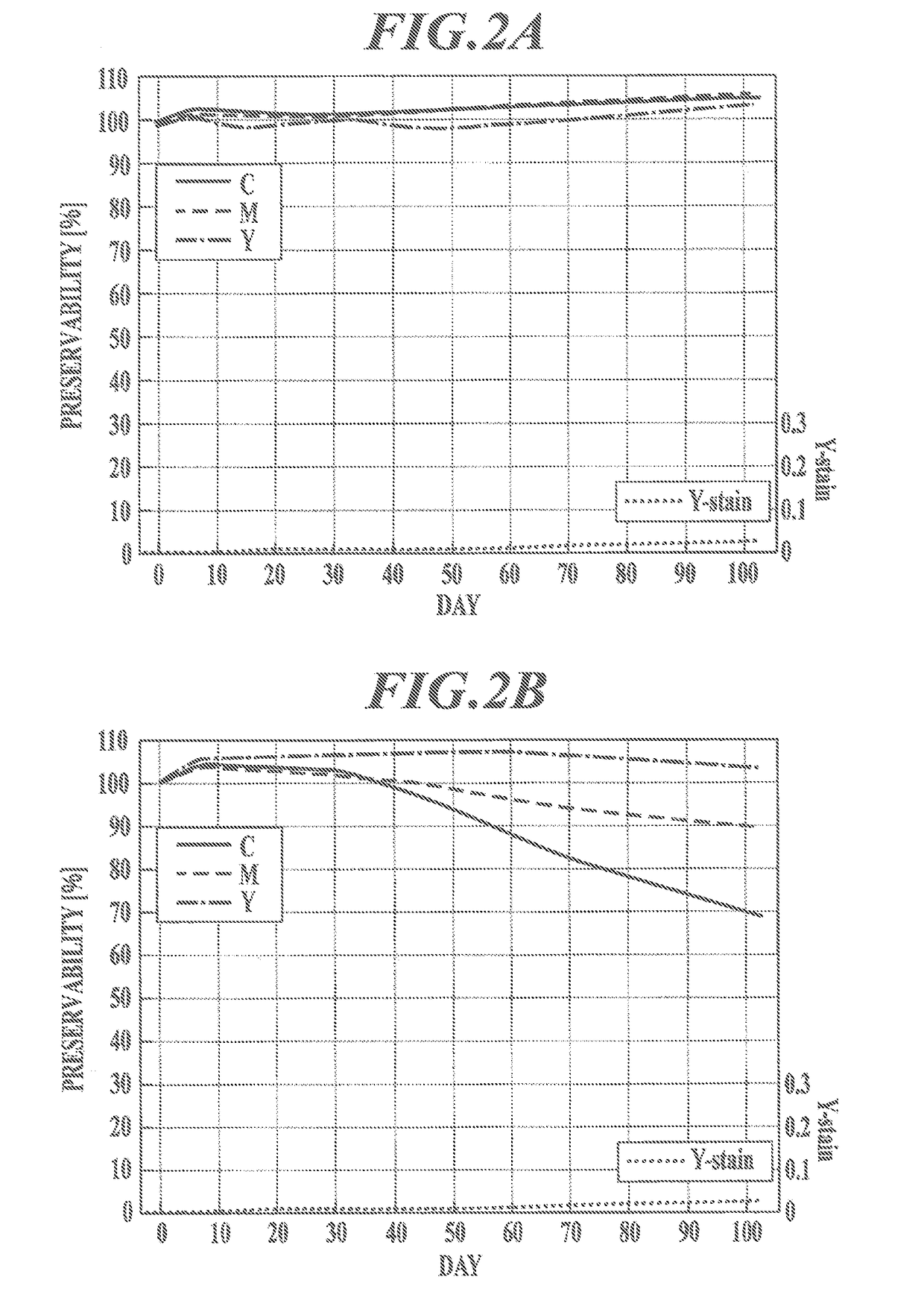Charge-transporting thin film
a thin film and charge-transporting technology, applied in the direction of non-metal conductors, conductors, electrolytic capacitors, etc., can solve the problems of not exploiting the properties common organic materials, affecting the use of organic materials, and generally involving problems, so as to achieve small variations in properties, small variations in resistance, and small variations over time
- Summary
- Abstract
- Description
- Claims
- Application Information
AI Technical Summary
Benefits of technology
Problems solved by technology
Method used
Image
Examples
example 1
[0249]In the Example below, the charge-transporting thin film is a luminous layer, and the functional organic compounds are a luminescent dopant and a host compound.
>
[0250]Indium tin oxide (ITO) with a thickness of 100 nm was deposited on a glass substrate with dimensions of 100 mm by 100 mm by 1.1 mm (NA 45 manufactured by NH Technoglass Corporation) and was patterned into an anode. A transparent support substrate provided with the transparent ITO electrode was ultrasonically cleaned in isopropyl alcohol, was dried in a dry nitrogen stream, and then was cleaned in a UV ozone environment for five minutes.
[0251]A solution of 70% poly(3,4-ethylene dioxythiophene)-polyethylenesulfonate (hereinafter, referred to as PEDOT / PSS; Baytron P Al 4083 available from Bayer) in pure water was applied by spin coating on the transparent support substrate at 3000 rpm for 30 seconds. The coating film was dried at 200° C. for one hour. A hole injection layer with a thickness of 20 nm was thereby forme...
example 2
[0268]Another Example will now be described. In this example, the charge-transporting thin film is a luminous layer, and the functional organic compounds are a luminescent dopant and a host compound, as in Example 1.
>
[0269]Indium tin oxide (ITO) with a thickness of 100 nm was deposited on a glass substrate with dimensions of 100 mm by 100 mm by 1.1 mm (NA 45 manufactured by NH Technoglass Corporation) and was patterned into an anode. A transparent support substrate provided with the transparent ITO electrode was ultrasonically cleaned in isopropyl alcohol, was dried in a dry nitrogen stream, and then was cleaned in a UV ozone environment for five minutes.
[0270]A solution of 70% poly(3,4-ethylene dioxythiophene)-polyethylenesulfonate (PEDOT / PSS; Baytron P Al 4083 available from Bayer) in pure water was applied by spin coating on the transparent support substrate at 3000 rpm for 30 seconds. The coating film was dried at 200° C. for one hour. A first hole transport layer with a thickne...
example 3
[0280]Another Example will now be described. In this example, the charge-transporting thin film is a luminous layer, and the functional organic compounds are a luminescent dopant and a host compound.
>
[0281]Indium tin oxide (ITO) with a thickness of 100 nm was deposited on a glass substrate with dimensions of 100 mm by 100 mm by 1.1 mm (NA 45 manufactured by NH Technoglass Corporation) and was patterned into an anode. A transparent support substrate provided with the transparent ITO electrode was ultrasonically cleaned in isopropyl alcohol, was dried in a dry nitrogen stream, and then was cleaned in a UV ozone environment for five minutes.
[0282]The transparent support substrate was fixed to a substrate holder in a commercially available vacuum vapor deposition system, and 200 mg of TPD (N,N′-bis(3-methylphenyl)-N,N′-diphenyl-(1,1′-biphenyl)-4,4′-diamine) was placed onto a molybdenum resistive heating boat, 200 mg of CBP was placed onto another molybdenum resistive heating boat, 200 m...
PUM
| Property | Measurement | Unit |
|---|---|---|
| boiling point | aaaaa | aaaaa |
| temperature | aaaaa | aaaaa |
| thickness | aaaaa | aaaaa |
Abstract
Description
Claims
Application Information
 Login to View More
Login to View More - R&D
- Intellectual Property
- Life Sciences
- Materials
- Tech Scout
- Unparalleled Data Quality
- Higher Quality Content
- 60% Fewer Hallucinations
Browse by: Latest US Patents, China's latest patents, Technical Efficacy Thesaurus, Application Domain, Technology Topic, Popular Technical Reports.
© 2025 PatSnap. All rights reserved.Legal|Privacy policy|Modern Slavery Act Transparency Statement|Sitemap|About US| Contact US: help@patsnap.com



